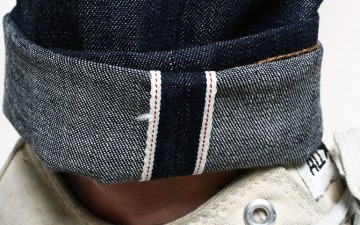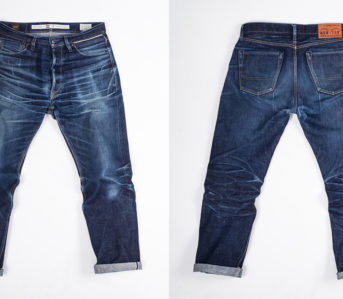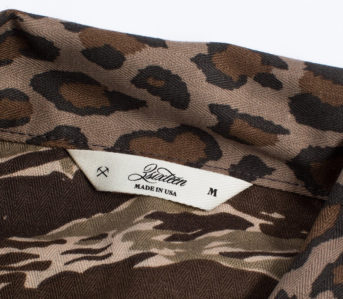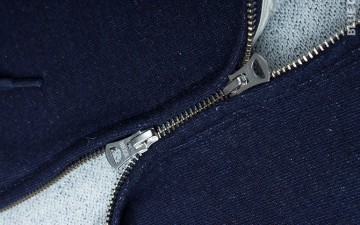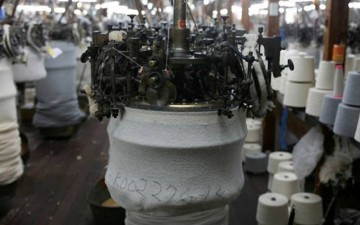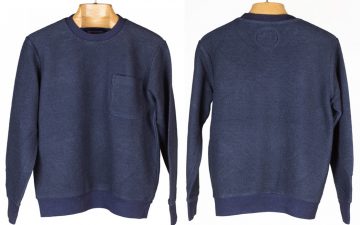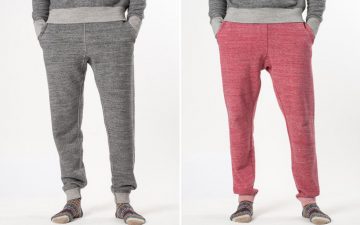Next year Champion turns 100, leaving in its historical wake an intriguing tale of fashion, class, and American athleticism. Champion first democratized by leaving the nation’s most elite college campuses and becoming a bona-fide streetwear staple.
But the company, both contesting and profiting by their brand’s newfound ubiquity, moved to the high-end world of exclusive collaborations. The kind that gets kids swarming their local Supreme. So stick with us as we cover the classic athletic sweat as it became something much more.
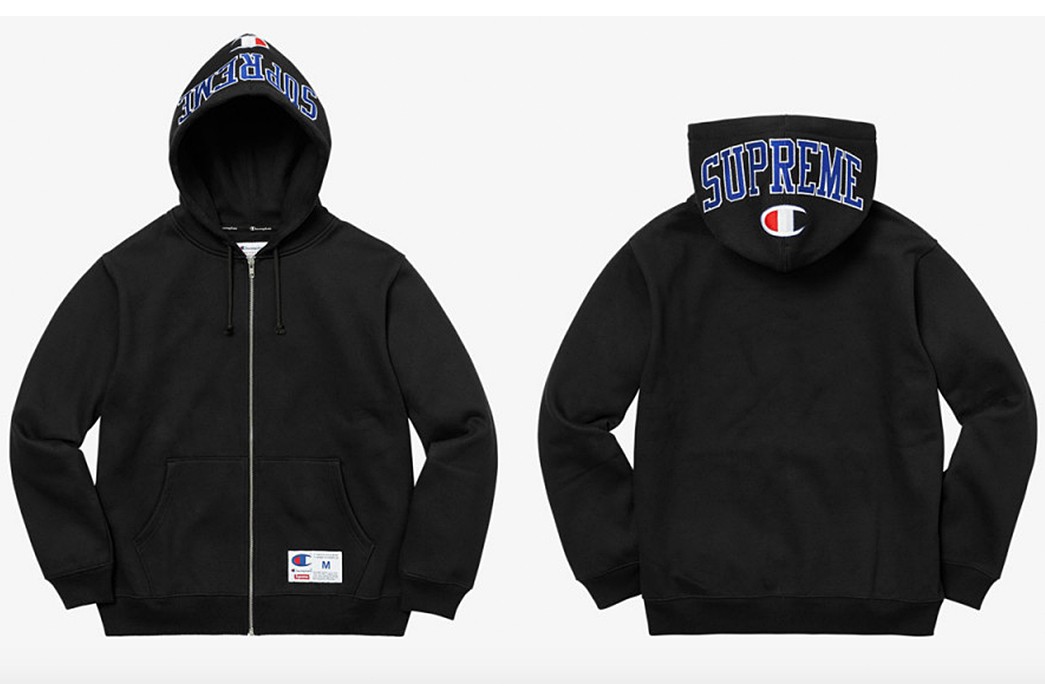
Shut up and take my money,” the sweaty teens scream in line for this Supreme x Champion collab. Image via Highsnobiety.
The Beginning
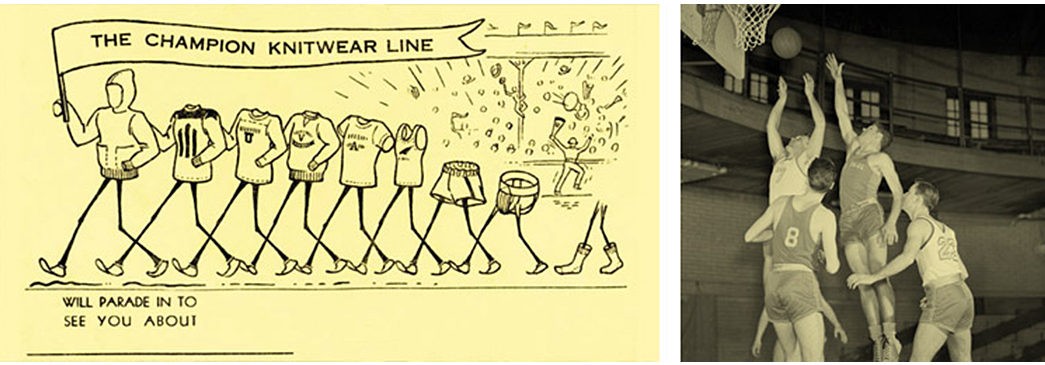
Images via Champion.
The Feinbloom brothers founded The Knickerbocker Knitting Company in 1919 (not to be confused with Knickerbocker Mfg.), an excellent time to get into the sportswear business. The 1920s saw a boom in sports appreciation and athletic competition worldwide.
America’s colleges were the cradle of these rapidly professionalizing sports and the nation’s wealthiest and most fortunate sons and daughters squared up on fields and courts and inevitably sweat through their clothes.
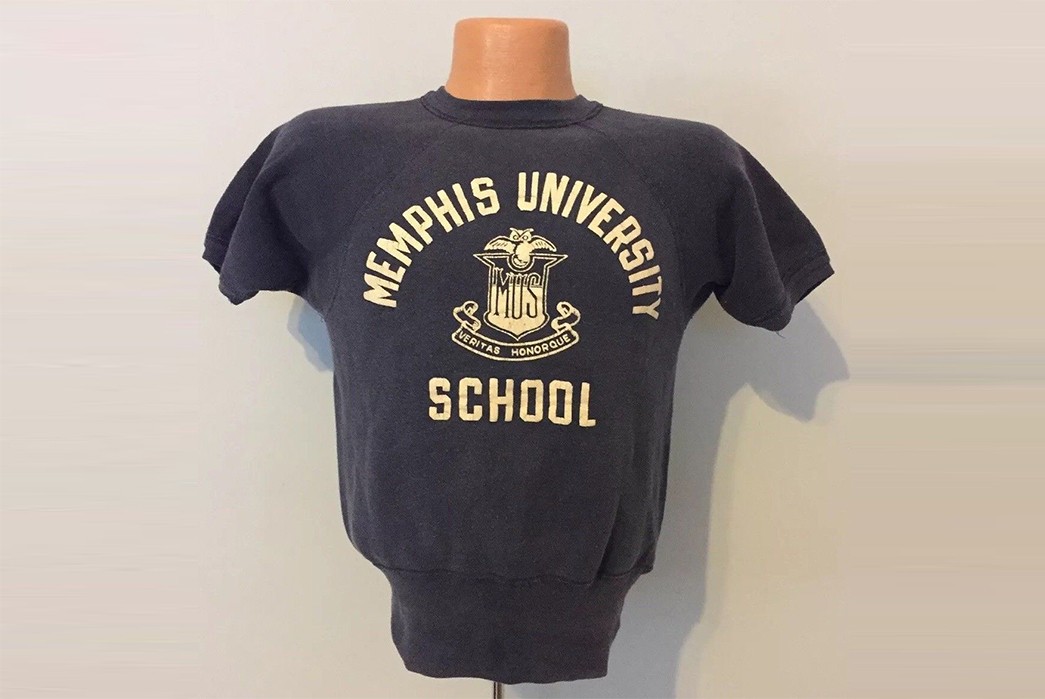
Vintage Champion Sweatshirt. Image via Ebay.
Knickerbocker’s first major success was an agreement to make sweatshirts for the University of Michigan’s various sports teams. The brand was suddenly involved in the first major push to regulate sports team uniforms, which up until this point had been rather haphazardly assembled. In 1930, the company renamed itself Champion Knitting Mills.
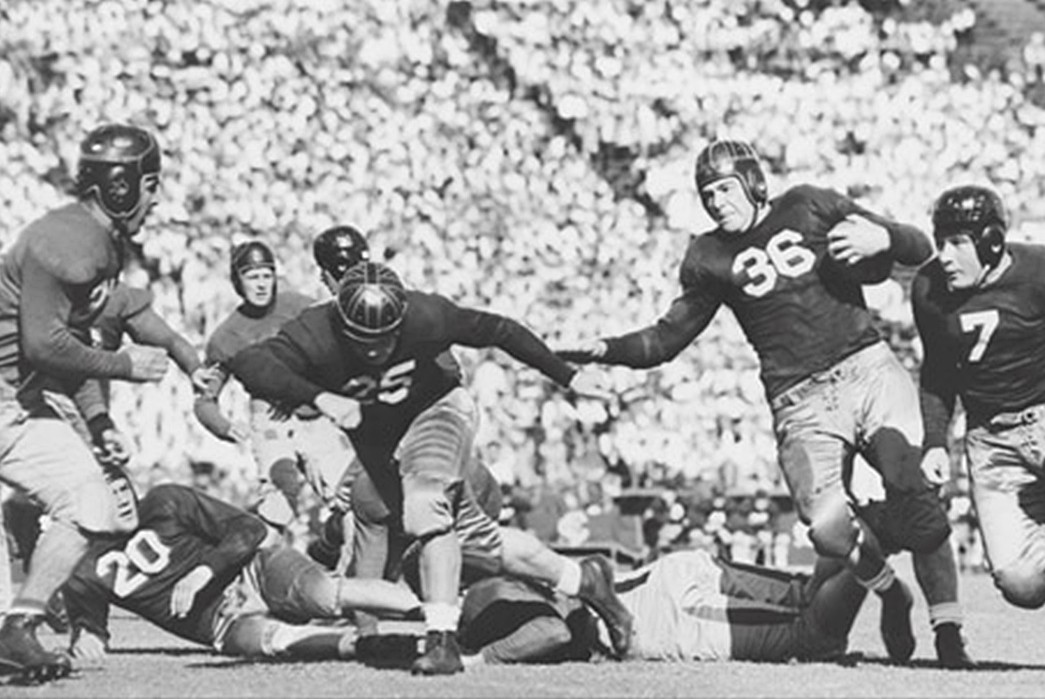
Champion football uniforms. Image via Champion.
But giving uniformity to uniforms wasn’t Champion’s only claim to fame. Industrial washing machines were shrinking and warping the team’s cotton gear, so the folks at Champion set to work, ultimately producing the now-famous “reverse-weave” sweatshirts. Reverse-weave knits are made of a heavy-duty cotton fleece and are cut on the cross-grain, a deceptively simple way to prevent vertical shrinkage. At this point, athletic wear was exclusively being made of cotton, a marked departure from an earlier era when almost all athletic wear (even swimsuits) were made from wool.
This era saw the creation of hoodies, although at that time, Champion called them “side-line sweatshirts.” Elasticated cuffs and waists were added to crew-necks to retain precious body-heat and suddenly the modern sweatshirt was created.
Champion Graduates
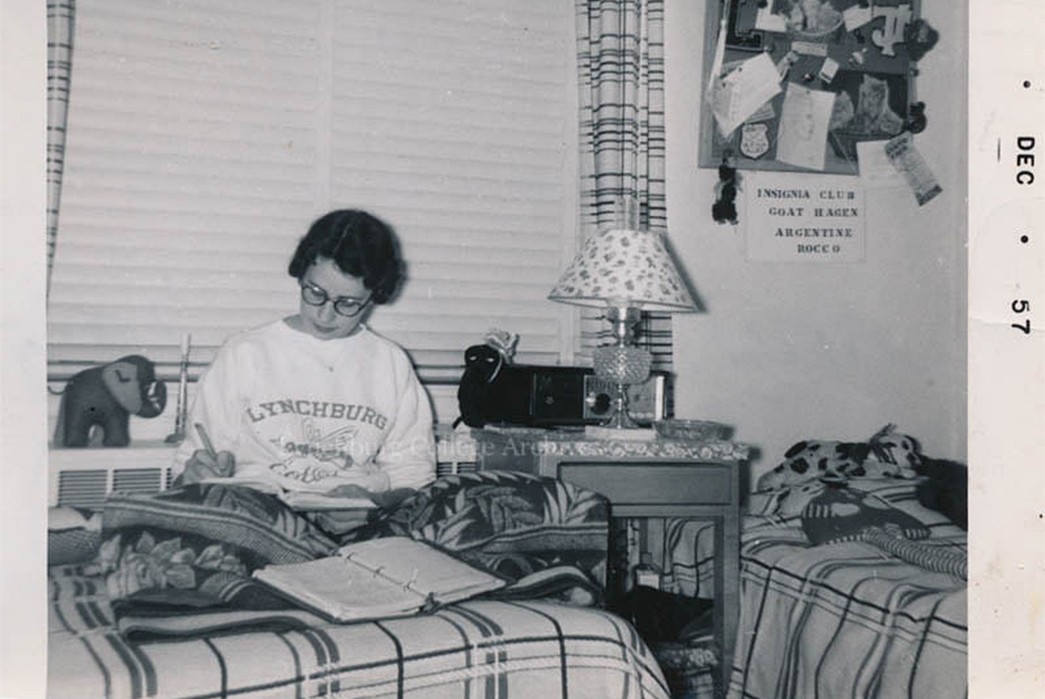
Woman Studying. Image via Fiveprime.
Sweatshirts were slowly adopted by the non-athletes on college campuses as well. Champion was carried by many college bookstores nationwide and its warm, no-fuss clothes were a hit. But sweats were still worn almost exclusively by the country’s academics. It would take a war to bring sweatshirts to a wider audience.
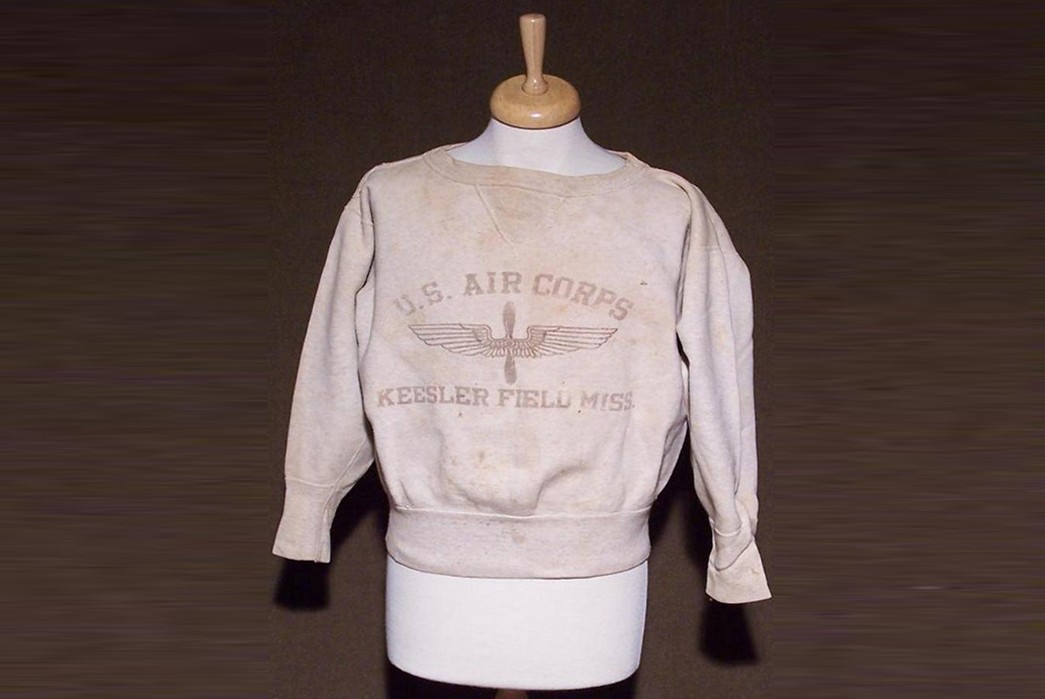
Military Sweats.
The US Army in the 40s and 50s was on the prowl for new kinds of athletic wear to train its recruits. For the first time sweatshirts were worn on a large scale off-campus, at which point they became less an Ivy League affectation and more a crucial wardrobe staple.
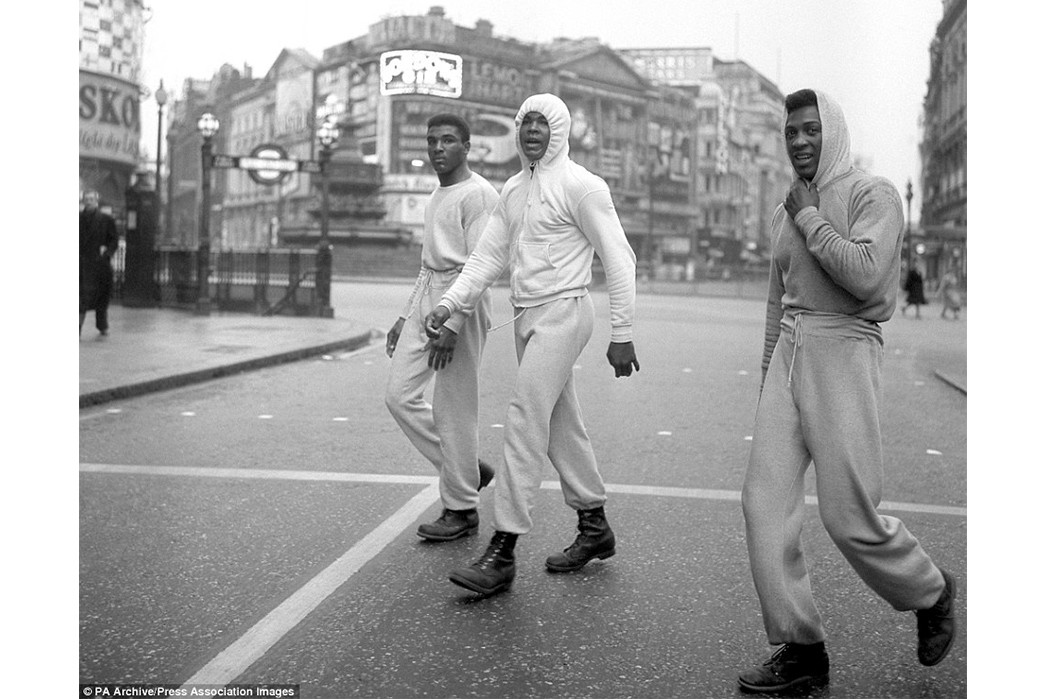
Muhammad Ali trains in London. Image via Daily Mail.
Iconic athletes were spotted in the sweats first invented by Champion, like the above photo of Muhammad Ali, training for his fight at Wembley stadium in 1963. His iconic gear would soon be outdated, as Champion led the charge in developing new synthetic fabrics more suitable for exercise.
Breathable mesh shorts, nylon-lined jackets, and sports bras were all invented in the 1970s and reflected both recent technological advancements and the further professionalization of sports in America.
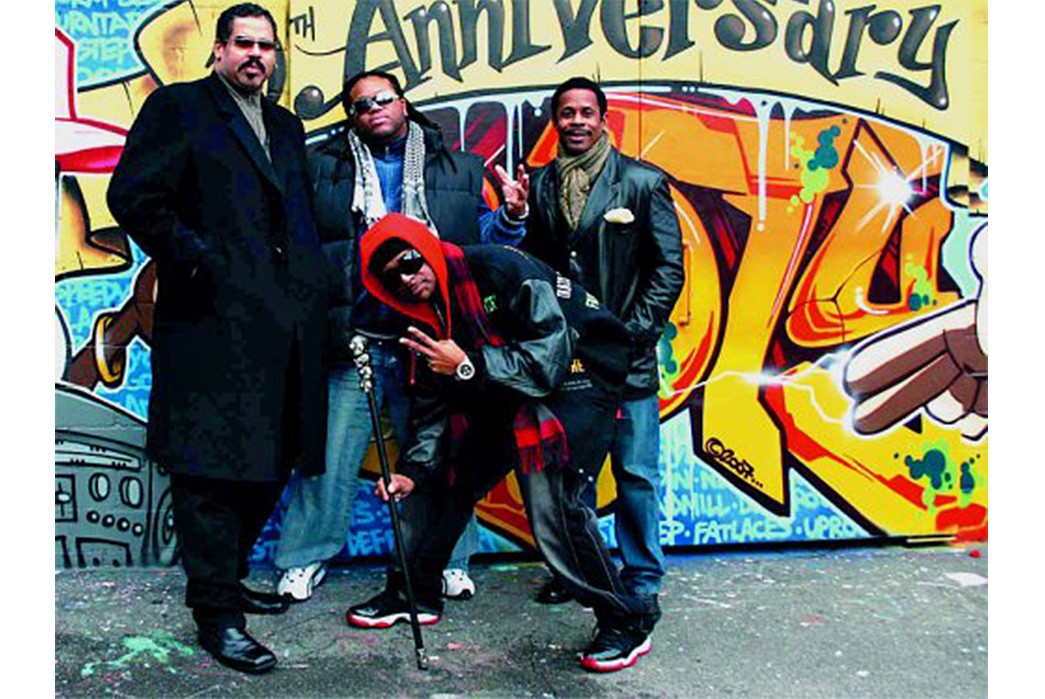
Sugarhill Gang. Image via Last.fm.
Sweatshirts, specifically hoodies were suddenly associated with a brand-new genre of superstar: the hip-hop artist. The revolutionary new wave of music that began in New York would become inextricably tied to the Champion sweatshirt. This new sound gave a much-needed dose of contemporary edge to an icon in need of some reinvention.
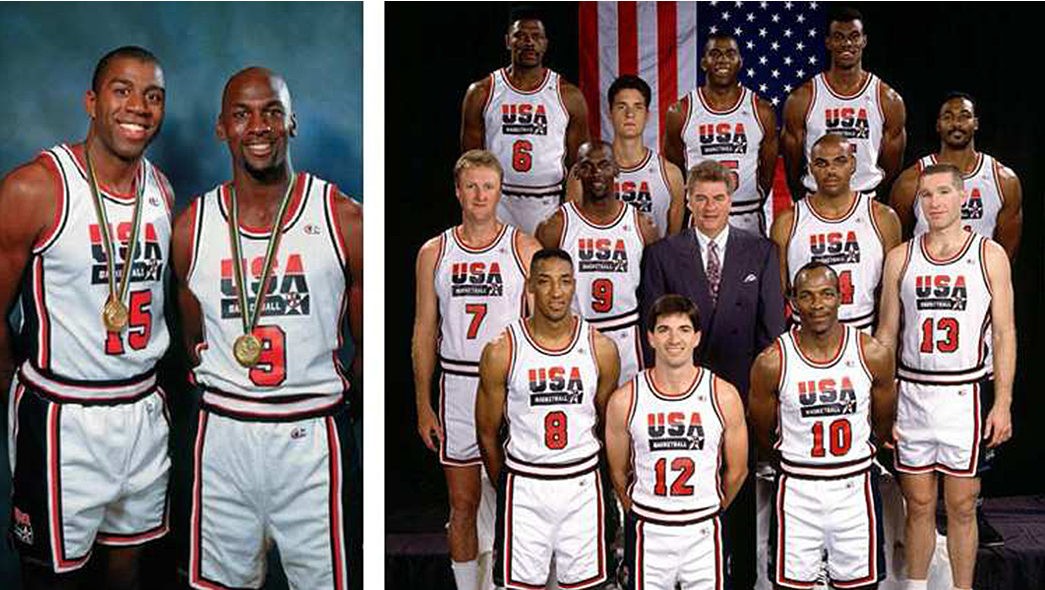
1990 Olympic Basketball Team. Image via Champion.
In the 1990s, Champion scored another victory: the exclusive right to outfit the 27 teams of the NBA. But Champion also made a name for itself on the international scale at the 1990 Olympics in Barcelona, providing the uniforms for the gold medal-winning American “dream team.” The 90s marked an important moment for Champion. Global Brand Ambassador Manny Martinez reminisces that, “you didn’t even have to put it on racks back then.” A perfect storm of cool kept Champion on the cutting edge, but no one was calling their stuff high-end exactly. That all came later.
Champion x (Insert Expensive Brand Here)
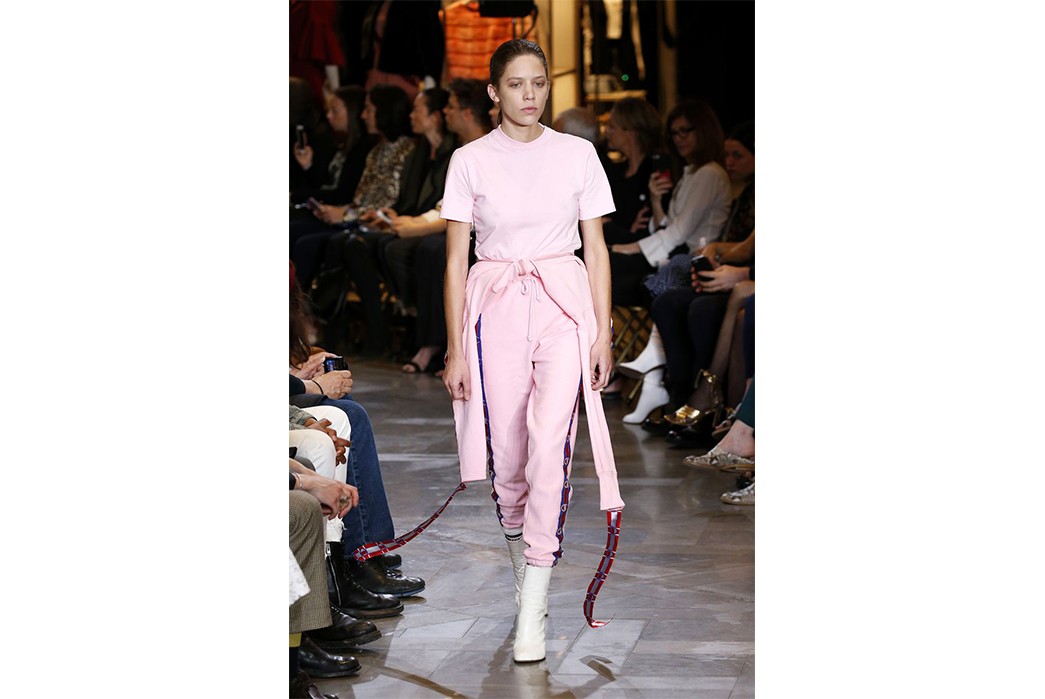
Vetements gets all Vetements with the Champion brand. Image via Racked.
In recent years, fashion-cum-streetwear labels like Vetements and Supreme have collaborated with Champion to create high-priced logo-repositories like the above ensemble. While the designs are (at least to this snobby author) questionable at best, the designers who make them have intriguing reasons for their love of the iconic athletic brand.
Many of the most influential players in fashion today grew up in Champion, in the era where high school gym uniforms bore the brand’s iconic C logo. So although these collaborations are prohibitively-priced, they (at least conceptually) maintain some of their everyman quality. The proverbial ” blank slate” is frequently mentioned.
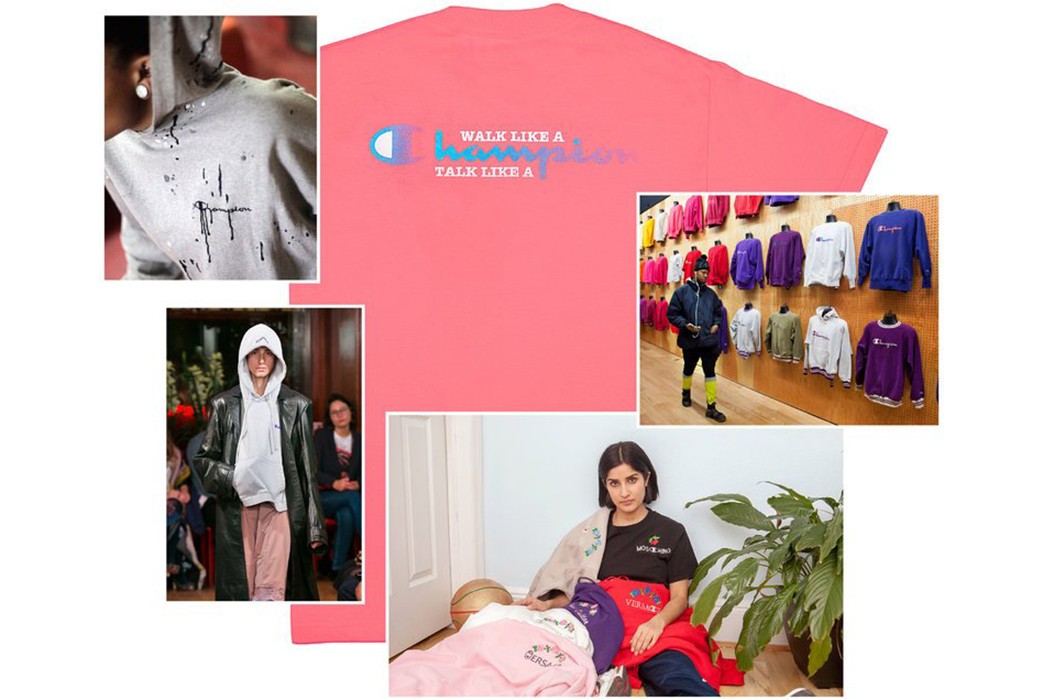
Champion is fancy now! Image via the NY times.
Regardless of hype-factor, Champion could simply not be as successful as it is today without remaining relevant. Its ties to old-timey athleticism keeps it a classic basic with the retro-crowd and its ascendancy in the NBA and the early days of hip-hop has infused the brand with a dose of 90s nostalgia. And although the sweatshirt is remarkably less elitist and white-washed than in its early days on the University of Michigan, there remains a marked dichotomy in the treatment of its wearers.
While Mark Zuckerberg was met with bemusement by venture capitalist investors when he arrived to a meeting in a hoodie, teenager Trayvon Martin was gunned down by George Zimmerman in Sanford, Florida in essentially the same outfit. In shocking ways, the sweatshirt is interpreted variably as a sign of cheeky rebellion or delinquency, often dependent on the wearer’s race.
The Final Say
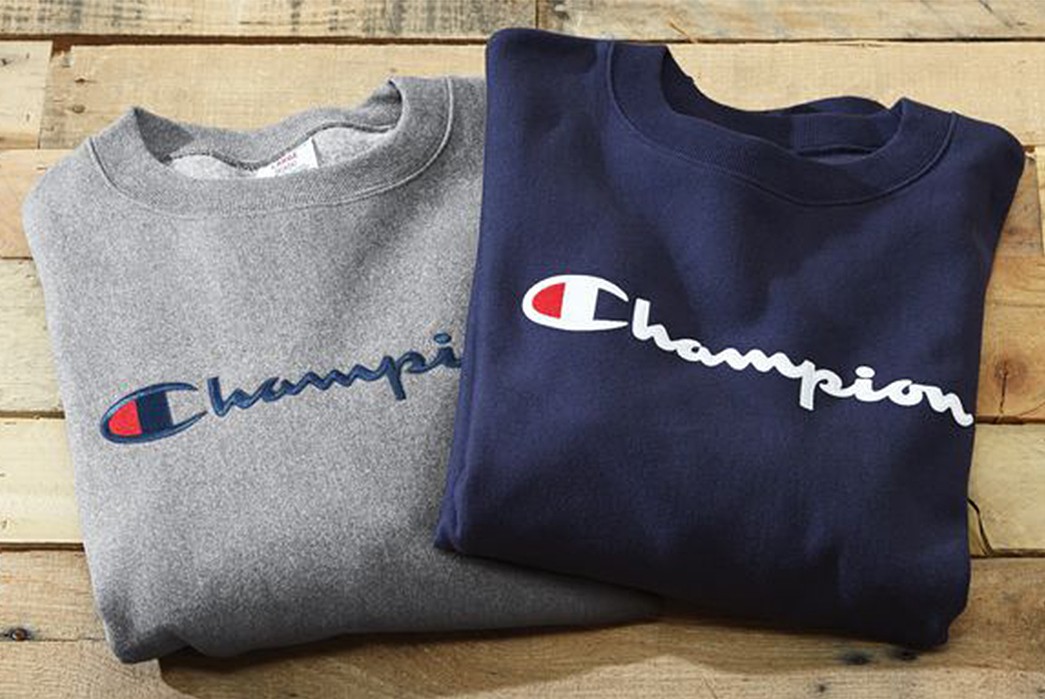
Champion. Image via Champion.
With Champion’s centennial approaching, we can be pretty sure the brand will be sticking around, but what remains to be seen is the way the company will continue to cling to relevance. Their brand history is fascinating in the way it bounces across race and class lines and even into the world of high-fashion. Whether or not this cultural ping pong game continues is immaterial to the brand’s success. The blank slate, with or without extra bells and whistles is here to stay.

